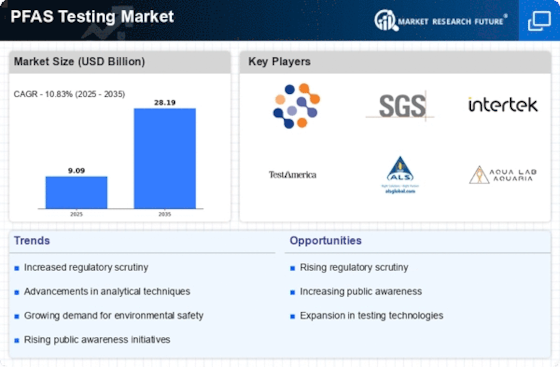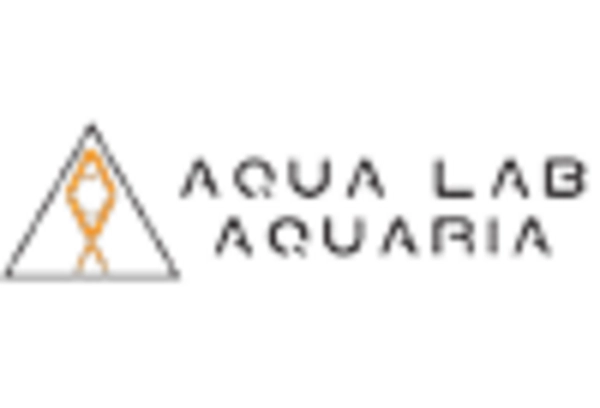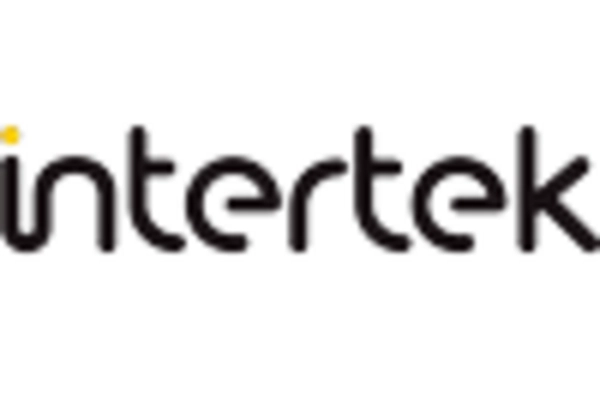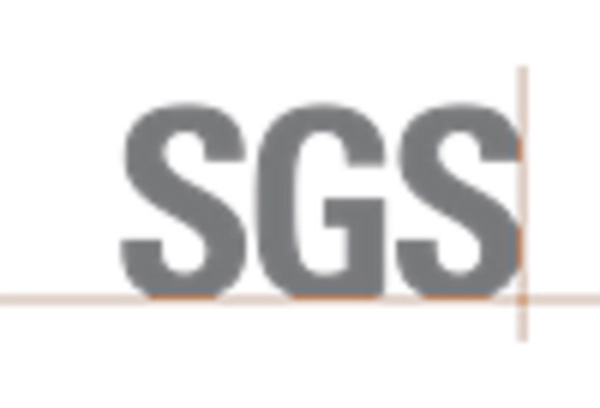The PFAS Testing Market is currently characterized by a dynamic competitive landscape, driven by increasing regulatory scrutiny and heightened public awareness regarding the environmental and health impacts of per- and polyfluoroalkyl substances (PFAS). Key players such as Eurofins Scientific (FR), SGS SA (CH), and Intertek Group plc (GB) are strategically positioning themselves through innovation and regional expansion. Eurofins Scientific (FR) has focused on enhancing its testing capabilities, while SGS SA (CH) emphasizes its global reach and comprehensive service offerings. Intertek Group plc (GB) is leveraging its technological advancements to improve testing accuracy and efficiency. Collectively, these strategies not only enhance their market presence but also contribute to a more competitive environment, as companies vie for leadership in a sector that is rapidly evolving due to regulatory changes and consumer demand.
In terms of business tactics, companies are increasingly localizing their operations to better serve regional markets and optimize supply chains. The PFAS Testing Market appears moderately fragmented, with several players competing for market share. This fragmentation allows for a diverse range of services and innovations, although it also presents challenges in terms of standardization and quality assurance. The collective influence of key players is significant, as they set benchmarks for testing methodologies and compliance standards that others in the market may follow.
In August 2025, Eurofins Scientific (FR) announced the launch of a new suite of PFAS testing services aimed at industrial clients, which is expected to enhance their market share in the industrial sector. This strategic move underscores the company's commitment to addressing the specific needs of industries heavily impacted by PFAS regulations, thereby positioning itself as a leader in tailored testing solutions. The introduction of these services may also facilitate stronger relationships with clients seeking compliance and risk management solutions.
In September 2025, SGS SA (CH) expanded its laboratory capabilities in North America by acquiring a regional testing facility specializing in PFAS analysis. This acquisition is likely to bolster SGS's operational capacity and enhance its service offerings in a key market. By increasing its footprint in North America, SGS not only strengthens its competitive position but also aligns with the growing demand for comprehensive PFAS testing services in the region, which is critical for industries facing stringent regulatory requirements.
In July 2025, Intertek Group plc (GB) launched a digital platform designed to streamline the PFAS testing process for clients, integrating advanced data analytics and reporting features. This initiative reflects a broader trend towards digital transformation within the industry, as companies seek to enhance efficiency and provide clients with real-time insights. The platform's introduction may significantly improve client engagement and satisfaction, positioning Intertek as a forward-thinking leader in the PFAS testing space.
As of October 2025, the competitive trends in the PFAS Testing Market are increasingly defined by digitalization, sustainability, and the integration of artificial intelligence. Strategic alliances among key players are shaping the landscape, fostering innovation and collaboration in testing methodologies. Looking ahead, it is anticipated that competitive differentiation will evolve, with a shift from price-based competition to a focus on innovation, technological advancements, and supply chain reliability. Companies that can effectively leverage these trends are likely to secure a competitive edge in this rapidly changing market.

















Leave a Comment